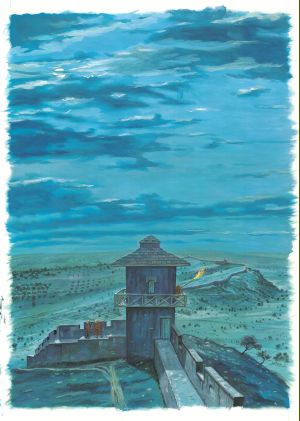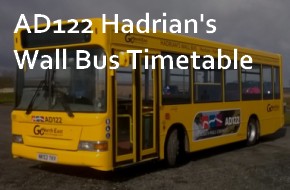Hadrian's Wall at Night
 In the first plan for Hadrian’s Wall there were no forts on the Wall itself, only milecastles and turrets. Troops stationed at the milecastles and turrets would have communicated with forts like Vindolanda established along the Stanegate road to the south by semaphore and lighted flares. When the Wall was already part built a decision was made to construct a new series of forts on the line of the Wall itself.
In the first plan for Hadrian’s Wall there were no forts on the Wall itself, only milecastles and turrets. Troops stationed at the milecastles and turrets would have communicated with forts like Vindolanda established along the Stanegate road to the south by semaphore and lighted flares. When the Wall was already part built a decision was made to construct a new series of forts on the line of the Wall itself.
Forts were located about 8.2 Roman miles apart along the line of the Wall - Birdoswald, Housesteads and Chesters forts are examples from the central and north Cumbrian sections of Hadrian’s Wall. Segedunum is an example from the eastern part of Hadrian’s Wall and Maryport an example in the west. This decision to build forts on the line of the Wall may have been made by the Emperor Hadrian when he visited Britain to see work in progress on the Wall in AD 122. The width of the Wall seems to have been reduced at the same time. There are examples of ‘narrow’ wall constructed on ‘broad wall’ foundations.
The archaeologist
You can find out more about the Roman Army and the construction of Hadrian’s Wall at the Roman Army Museum near Greenhead.


.gif)


 button to add an item to your Itinerary basket.
button to add an item to your Itinerary basket.
